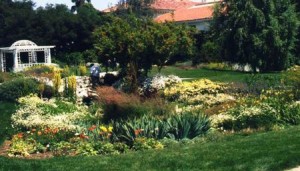Evaporation and transpiration are the two simultaneous and undistinguished processes. Evapotranspiration is the entity of evaporation and plant transpiration from the Earth’s surface and ocean surface to the atmosphere. Evaporation is the movement of water to the air from the sources such as the interception, water bodies, soil, canopies where as transpiration is the movement of water within a plant and loss of water in the form of vapour through stomata in its leaves. Evapotranspiration is a vital and major part of the water cycle. An element (such as a tree) that performs Evapotranspiration is said to be an evapotranspirator.
Evapotranspiration is a significant water loss from drainage basins. Types of vegetation use and land use significantly affect evapotranspiration, and hence the amount of water leaving a drainage basin. Because water transpired through leaves comes from the roots, plants with deep reaching roots can more transpire water constantly. Due to less extensive foliage, herbaceous plants generally transpire less than woody plants. In the dormant and early spring seasons, conifer forests, due to the enhanced amount of precipitation, tend to have higher rates of evapotranspiration than deciduous forests. Factors that affect evapotranspiration include the stage of plant’s growth or maturity level, percentage of solar radiation, soil cover, temperature, humidity, and wind.
In cloud forests, the unique ecosystems, forests reduce water yield through Evapotranspiration. Trees in cloud forests collect the liquid water and store in the form of fog or low clouds onto their surface, and again drips down to the ground but these trees still perform evapotranspiration, but often collect more water than they evaporate or transpire.
In unirrigated areas, actual evapotranspiration is usually no greater than precipitation, with some buffer in time depending on the soil’s ability to hold water. It will usually be less because some water will be lost due to percolation or surface runoff. An exception is areas with high water tables, where capillary action can cause water from the groundwater to rise through the soil matrix to the surface. If potential evapotranspiration is greater than actual precipitation, then soil will dry out, unless irrigation is used.

